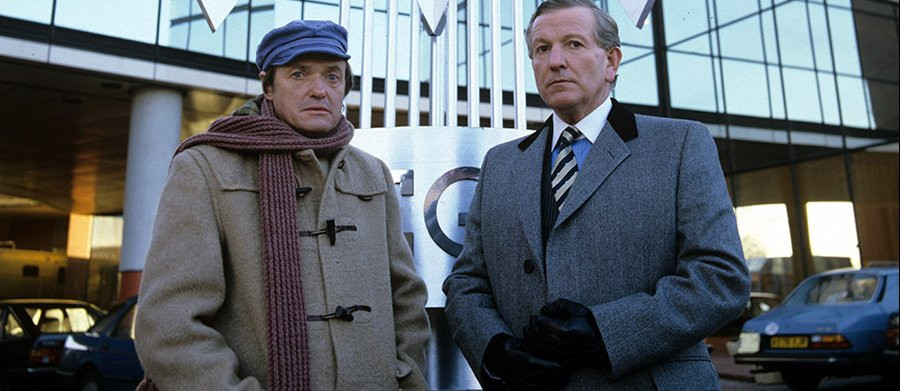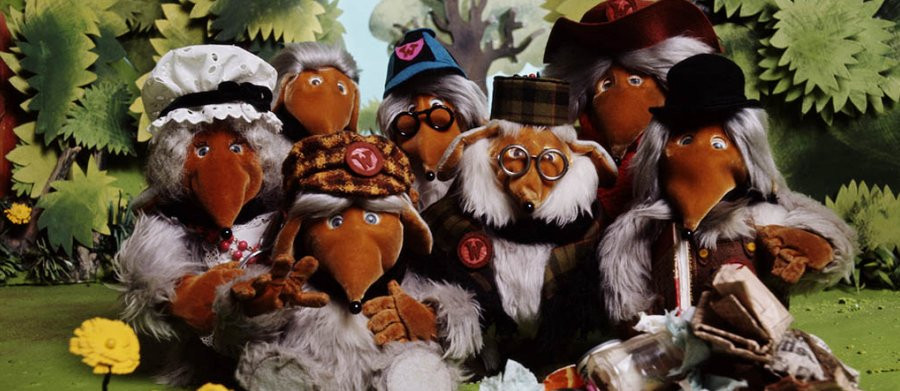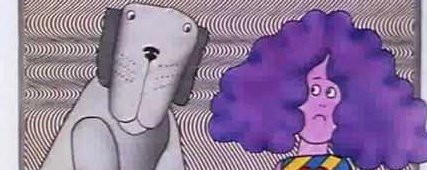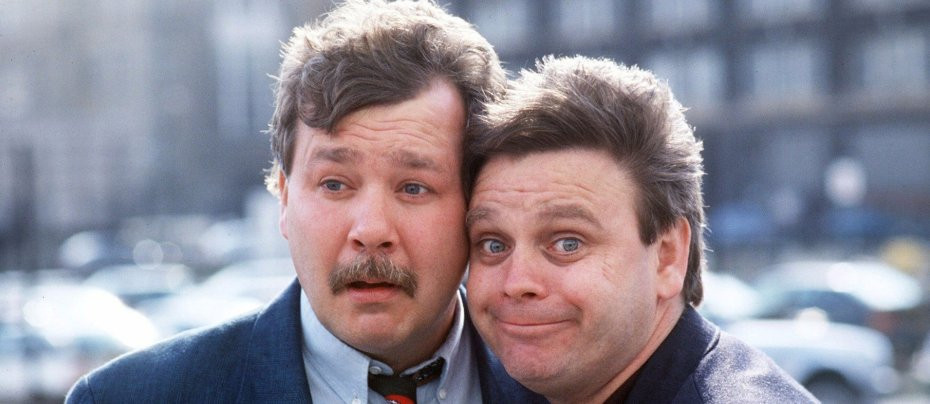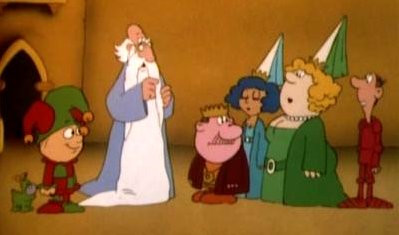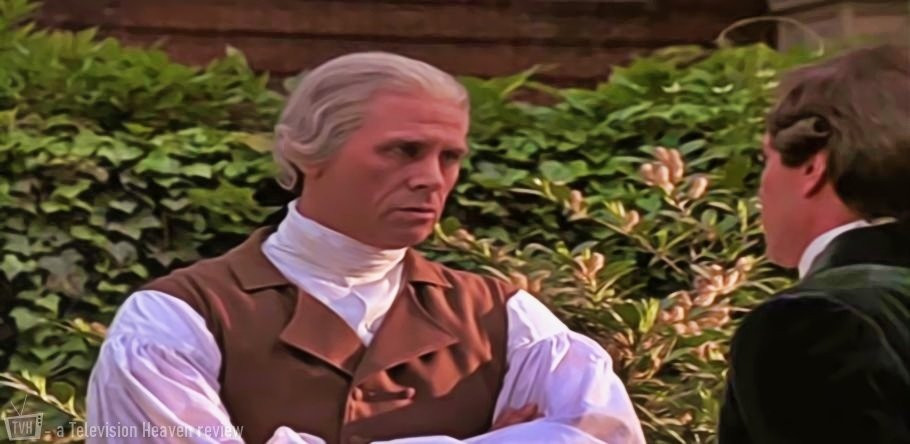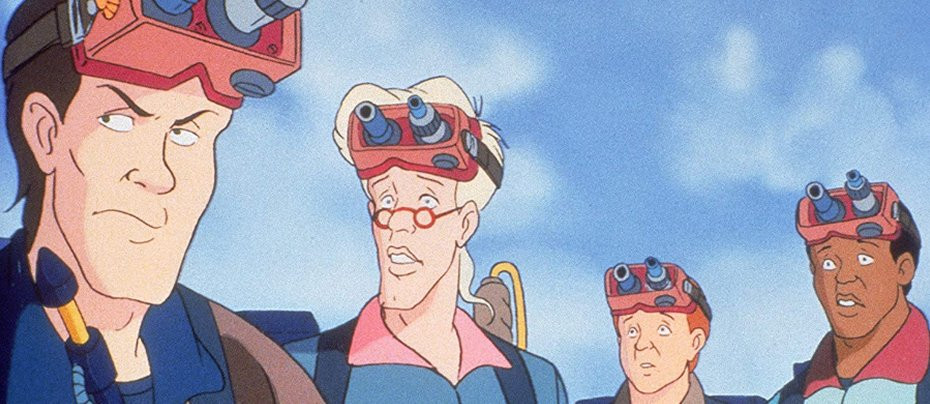
The Real Ghostbusters
1986 - United StatesAt its best, its creators remembered that children enjoy being scared, and some of the episodes were genuinely chilling
The Real Ghostbusters reviewed by Daniel Tessier
In 1984, Ghostbusters took cinema by storm. One of the first blockbusters, it successfuly combined wry humour, sci-fi adventure and cutting-edge special effects in a way that no film had ever managed before. Although an adult comedy (very adult in some places), the film's spooky shenanigans made it a big hit with kids. Merchandising for films was still in its infancy (the huge merchandising machine that followed Star Wars being the main example at the time), but Ghostbusters was quick to capitalise on its unexpected family audience. A hurriedly completed home video game and two novelisations of the film had some success leading the merchandise wave, but it wasn't until 1986 when it truly became a winning franchise with the launch of an animated TV spin-off. Called The Real Ghostbusters, it remains one of the best kids' animated adventure series ever.
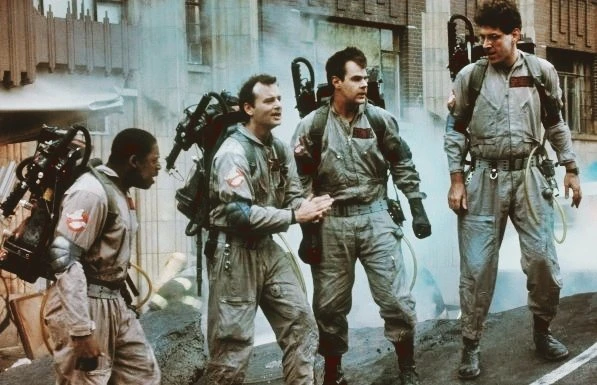
Today, animated kids' cash-ins to hit movies are common, even when the film itself was aimed at a an older audience. The Real Ghostbusters, though, was one of the first attempts to spin a film off into a cartoon world, and one of the most successful. Such spin-offs are commonly poorly written and often bear little resemblance to the film they are based on. RGB, as its handy abbreviation goes, was a series of a far higher quality than most, at least to begin with. The name of the series was a necessity of marketing. A legal dispute with Filmation – the animation studio behind He-Man and the Masters of the Universe, The Adventures of Superboy and the animated Star Trek – meant that the animated version couldn't exactly share the title of the film.
Filmation had produced a children's sitcom under the title The Ghost Busters in 1975, and Columbia Pictures had neglected to check if the name was available when they produced the Ghostbustersfilm. As such, they settled with Filmation to licence the name for a tidy sum, and Filmation immediately set about trying to ride the film's success by producing their own animated series based on the film. Columbia refused the rights, so Filmation just produced an animated follow-up to their old series, titled simply Ghostbusters. Columbia elected to work with the Franco-American animation studio DiC (hilariously marketed at the time as "The Wonderful World of DiC!"), but the legal wrangling over the name meant they had to distinguish their series from Filmation's efforts. The cheeky solution was to name their series The Real Ghostbusters, making it clear who's cartoon was the genuine follow-up to the film. In fairness to Filmation, their approach worked, and merchandise for their inferior series sold well off the back of the movie and RGB. I'm sure I wasn't the only child to receive toys and colouring books relating to the wrong Ghostbusters from well-meaning family members.
DiC's prior output included Ulysses 31, The Mysterious Cities of Gold and Inspector Gadget, fun and idiosyncratic animated shows released with both French and English audio. RGB was one of the studio's earliest tie-in productions, of which there would be many more over the coming years. In the case of RGB, audio recording and initial design was completed in LA, before being sent to DiC's Japanese extension and various Japanese animation studios, where the episodes were completed. The result is a definite anime style to the series, particularly the earlier episodes, and many of the weird and space-age sound effects continue to crop up in Japanese anime to this day. The series began with a five-minute pilot, more of a promotional video, to illustrate the potential of the series. Never aired in full, this was finally released on the complete DVD collection in 2008, but elements of it made their way into the episodes and promotional material. The short cartoon sees the film's four Ghostbusters – Ray Stantz, Peter Venkman, Egon Spengler and Winston Zeddemore – battling various spooks around New York City as Ray Parker Jr's hit theme song plays. The pilot was more clearly based on the film, with the 'busters dressed in beige overalls and chasing a clearly villainous Slimer, and much of this would be tweaked for the eventual series.
The series began airing in September 1986 (a mere five days after Filmation's show), kicking off a season of thirteen episodes. The set-up was much as in the film, with the four Ghostbusters working out of a firehouse, called out on jobs to catch ghosts as a commercial venture, but often having to save the city, or the whole world. They would hop in their trusty hearse, Ecto-1, armed with proton packs and ghost traps and all manner of gizmos just waiting to be made into toys. Episodes would often begin with the boys already finishing up on a routine bust, before the main events of the story started. Each Ghostbuster was designed to be distinctive and immediately recognisable, and none of them looked much like their live action counterpart. Ray was portly, ginger-haired and endlessly enthusiastic. Voiced by the legendary Frank Welker (too many credits to list, but you've heard his voice in many a film or cartoon), Ray had a childlike demeanour at odds with his mechanical genius. Egon was tall and thin, sporting an improbable blond quiff, and was a supreme intellect. Obsessed with his work and his collection of spores, moulds and fungus, and with limited social skills, he was voiced by the prolific Maurice LaMarche. Best known today as the voice of Brain on The Animaniacs, LaMarche completely disobeyed instructions to not do an impersonation of original film Egon actor Harold Ramis, and the character is easily the most like his live action alter ego.

The promo version of Peter looked rather like the original actor Bill Murray, but this was changed at the actor's request. The brown-haired Peter was now a more classically handsome charmer, and in the absence of his movie romantic interest Dana Barrett, tried to woo every attractive woman he encountered. Peter was voiced, initially, by Lorenzo Music, a writer and comedian who was by now already best known for his laconic voice work as Garfield the cat. Winston, the sole black character, needed less work to distinguish him from the other 'busters, and like in the film, was more of an everyman character, more worldly wise and practical than the others. Although Ernie Hudson auditioned to continue his role from the film, Winston was voiced to begin with by Arsenio Hall. This was something of a coup, as Hall was already a notable actor, writer and TV personality; by 1989, he'd have his own talk show, . To further distinguish the characters, the Ghostbusters had ditched their old uniforms and each wore a jumpsuit in a signature colour: Ray still in beige, Egon in blue, Peter in brown and Winston in a pale turquoise.
Of course, there was more to it than just the Ghostbusters. As in the film, they were supported by their long-suffering secretary, Janine Melnitz. Voiced by Laura Summer, Janine was every bit the outspoken Noo Yoik broad she was in the film – perhaps even more so. She was still besotted with Egon, and the will-they/won't-they flirtation between them continued on-and-off through the series. And then there was Slimer. Every kids' series needs a cute, trouble-making sidekick, and RGB was no different. The green ghost was the Ghostbusters' first successful catch had become one of the most recognisable visuals of the film. Between the promo pilot and the series proper, the decision was made to make this minor villain into a hero. He was named Slimer (the film script preferred "Onionhead") and became the mascot of the team, ostensibly kept around for tests. Also voiced by Welker (as were numerous other creatures throughout the series), Slimer was every bit the gluttonous hooligan he was in the film, but he was also firmly on the side of the 'busters.
As with most kids' animations, the main cast provided voices for multiple characters, but guest voices weren't unheard of. Unusually, the voice cast always recorded together in studio, rather than being edited together later. The series was visually arresting – absolute heaven for small children with a liking for the weird, gross and macabre. From the opening titles alone (with its new arrangement of the theme song) we had a legion of bizarre goblins and ghouls, headed by the Stay Puft Marshmallow Man himself, and it only got stranger in the episodes. While sometimes we'd meet spirits that could recognisably be called ghosts, most of the spooks in the show went with the sort of odd creatures that appeared in the film and upped the strangeness from there. The majority were designed by cartoonist Everett Peck, and my word, something strange was afoot in that man's imagination.
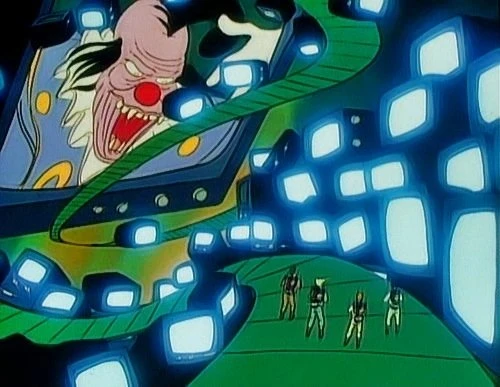
As well as the excellent design and voice work, what really set RGB apart from its various animated rivals was the quality of the writing. It's fair to say that in its earlier seasons, RGB was a family show, rather than merely a kids' diversion. The scripts were genuinely witty, with clever variations on the ghost-catching plot, brilliantly drawn characters and some cutting one-liners. The sprogs could enjoy the flashy blasters and monsters, while for the grown-ups, the jokes made it bearable, even enjoyable – at least enough to put up with the sheer row the ghosts made. The series' chief writer and story editor for its first few seasons was J. Michael Straczynski – later the creator of Babylon 5, Sense 8 and Jeremiah. He never treated the series as throwaway kids' stuff, and it shows. The first season is particularly good, the thirteen episodes gently poking fun at the concept and the film. "Citizen Ghost" shows us the immediate aftermath of the film, telling us how Slimer came to be part of the team. "Take Two" is cheekier, taking the name of the series as its starting point and having the "Real" Ghostbusters attend the premiere of the movie based on their experiences – complete with footage from the film. The first season, broadcast across the last months of the year, cannily included both a Hallowe'en and Christmas special. The latter, "Xmas Marks the Spot," worked on the ingenious premise that the Ghostbusters exist in the same reality as Dickens' classic A Christmas Carol, and sees them transported back in time, whereupon they bust the three Ghosts of Christmas and destroy Christmas forever. It's delicious.

A year after the first season's premiere on ABC, the series went to syndication, with a huge run of new episodes broadcast across multiple networks in the US. Fans tend to consider this the second season, but the actual second season of thirteen episodes was broadcast on ABC at the same time. Confusingly, this season underwent a number of tweaks that set it apart from the syndicated run. Ray was made slimmer (apparently an overweight hero being unacceptable), and Slimer was slightly redesigned, and his speech made more intelligible. Bill Murray is said to have complained about Lorenzo Music's voice for his character, saying it made him sound like Garfield (ironically, Murray would voice Garfield in two movies starting in 2004). He was replaced by comedian and impressionist Dave Coulier (Full House) who put on an awful impersonation of Murray's voice. More drastically, Janine was completely reinvented. The network hired a consultation firm, who considered the character as she existed to be too brassy, too sexy and a poor role model for girls. She was redesigned and rewritten as a softer, more motherly character, and Kathie Soucie (Mighty Max, Captain Planet and the Planeteers) took over as voice actor. Before, Janine had been a back-up Ghostbuster in her own right; now, she was nothing more than the help. Arsenio Hall left the role of Winston for his own show, replaced by Buster Jones (Transformers), and the consultants decided that the character should be relegated to being little more than the team's driver. The blatant racism of this attitude was the last straw for Straczynski, who walked.
To compound the confusion of having two somewhat different versions of the series airing together, several of the syndicated episodes were later dubbed over with Soucie and Coulier's voices for reruns. The studio gave the series a major rework for its next season, and this would mark a notable drop in quality. Renamed officially as Slimer! and the Real Ghosbusters, the series was made far more kid-focused, with tweaks to the running time and general format. In its initial run, each instalment would involve an episode of RGB and an episode of Slimer! The latter was aimed in particular at small children. The change in tone from the clever and sometimes genuinely unsettling series to the now safe and cuddly version was gradual, but severe, and it only got worse.

By this stage, the series had been exported worldwide (UK broadcasts beginning in 1988), with its own enormous array of merchandise, from comics to board games to a creative range of action figures. In 1989, Ghostbusters II hit cinemas to middling returns (it's far better than commonly remembered), itself made more suitable for a family audience. The series had shown the occasional link directly back to the first film in its run, but these were made a little more overt with the release of Ghostbusters II, and the nebbish Louis Tulley – played by Rick Moranis in the films – was introduced as a recurring character, voiced by Rodger Bumpass (Spongebob Squarepants). As the series' best years were broadcast overseas, it limped to an end in the States, with two more seasons (the last only four episodes long) becoming more childish still. Straczyski was tempted back to write a few more episodes on a freelance basis, including the rather good "Janine, You've Changed" which suggested Janine had made a deal with a ghost to change her appearance and make herself more appealling to Egon.

While its latter days were a dire drop in quality, at its height The Real Ghostbusters was a truly excellent series. At its best, its creators remembered that children enjoy being scared, and some of the episodes were genuinely chilling for a small person. Episodes like "Knock, Knock" which saw the 'busters up against the encroaching of a nightmarish spirit world into the world of the living; "Ragnarok and Roll," which saw a suicidally depressed man almost destroy the world; or "The Grundel," with its frankly horrifying child-predator bogeyman. Others were truly bizarre comedies, such as the Agatha Christie parody "Boo-Dunnit" and its cast of grotesques; and the ingenious "Chicken, He Clucked," in which a madman makes a deal with a demon to rid the world of every chicken. My favourite remains "Night Game" where Winston takes part on a baseball game between the forces of good and evil, for the fate of a human soul.
The brilliance of the early years makes it all the more disappointing that the last few seasons became so simplistic and childish, finally ending the series due to a drastic drop in ratings. The series remains beloved by those of us who were children at the right time, to whom the movies looked like the spin-off. In 1997, six years after the series ended, a sequel was produced. Extreme Ghostbusters lasted for a single season of forty episodes, and brought back Egon (Maurice LaMarche again) and Janine (Pat Musick) leading a new team of young Ghostbusters (and Slimer, of course). Extreme Ghostbusters lacked the wit of its predecessor, but upped the horror – the writers and artists often seemed to be trying to see how much they could get away with on children's television. The Ghostbusters franchise continues in new forms to this day, and its only a matter of time until a new animated version arrives... but I bet it won't be half as good as The Real Ghostbusters was at its height.
Seen this show? How do you rate it?
Seen this show? How do you rate it?
Published on January 18th, 2023. Written by Daniel Tessier for Television Heaven.




